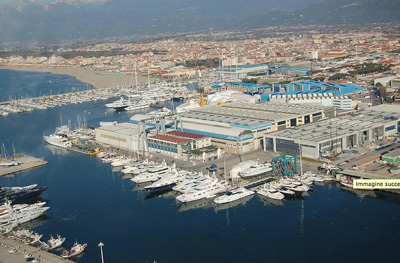
The boat building sector: fashion yacht in Viareggio
The boat building sector of the Versilia coast is, thanks to its centuries-old tradition, synonymous with quality and cutting edge technology.
The ship-building industry, with its five centuries of history, is in fact a major player on the world stage.
Thanks to the geographical layout of the Tuscan coast, with its numerous islands and the proximity to Corsica, sailing for commerce and fishing has developed since ancient times with the consequent creation for first rowing and then sailing boats, and finally motor boats. Over time the quality and reliability of these boats has reached an extremely high level.
From the 1960’s to the 1980’s, with the introduction of new materials such as fibre glass, carbon fibre, steel and aluminium, we have witnessed a real revolution, not only in the market but also in the philosophy of pleasure boat construction.
Mass production has increased and the standardization of accessories has allowed the production of boats at a more reasonable price and a consequently wider distribution of pleasure craft.
the Viareggio boat-building industry has meanwhile also maintained a production that targets the more demanding niche markets, using more expensive materials.
Today the Versilia area can boast an economy of great importance which includes, apart from the boat-building production of the large yards, also small craftsman business, created as a consequence of the decentralization of production towards tertiary companies which specialise in specif fields (electronic instrumentation, motors, furnishing, etc.)
Viareggio’s fame as home to skilled boat-builders has spread beyond Italy. In fact, 18% of the world’s luxury boats are produced there, with the presence of world-wide producers Azimut-Benetti, Rodriguez Group, Fipa Group, San Lorenzo, Perini Navi, compared with the 45% built in Italy, with a total of 7 out of the 20 producers world wide.
Tradition and high quality have led the production to distinguish itself in terms of style, elegance and high level of technology in the command and navigation systems, making the boats of Tuscany unbeatable for reliability, safety and interior design and furnishings.




